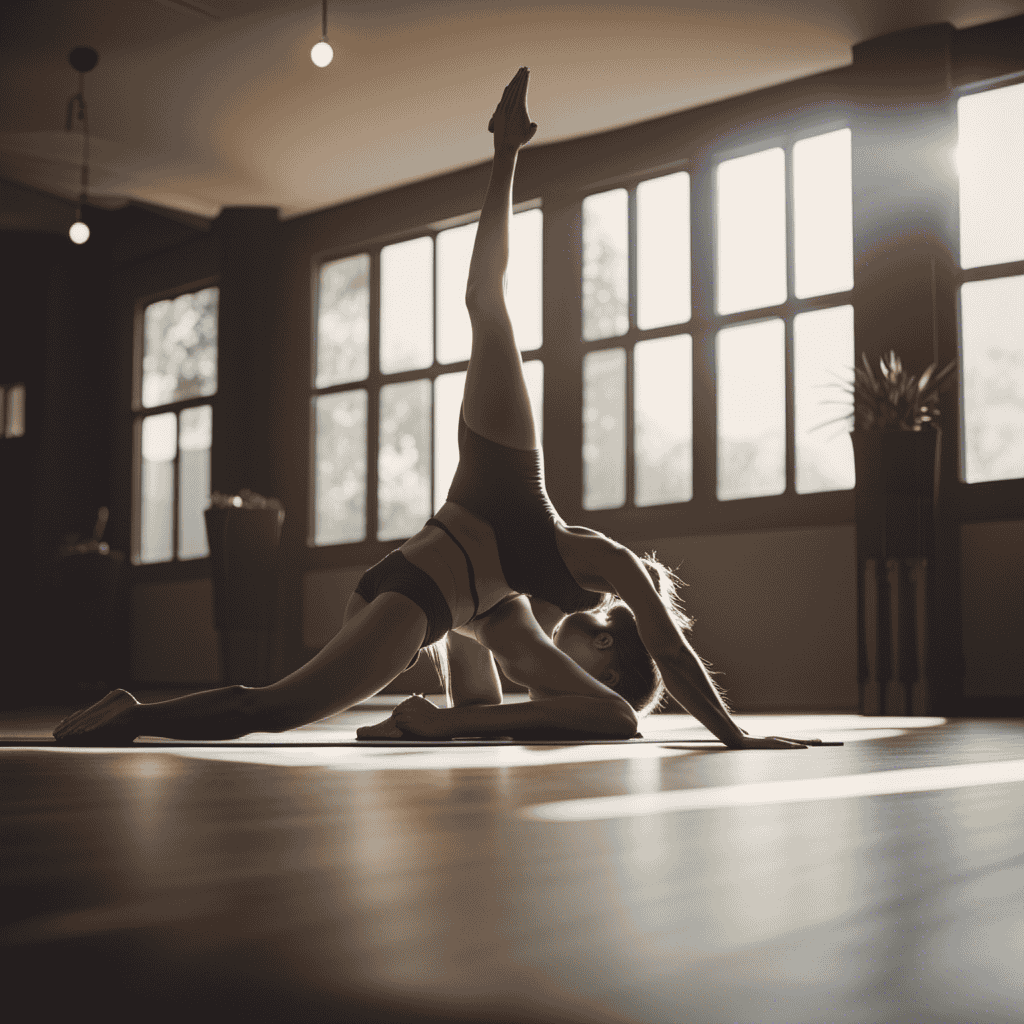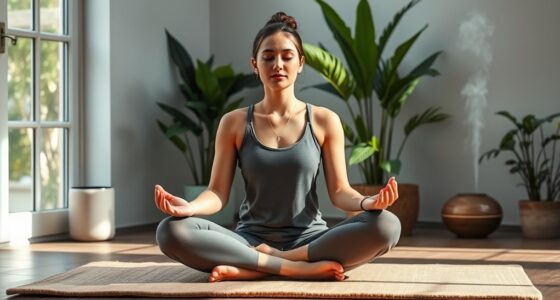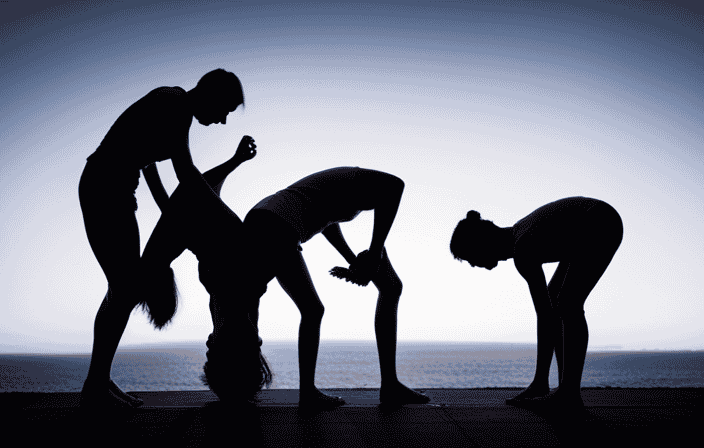To find heart-opening poses for emotional balance, focus on stretches like Camel, Bridge, and Warrior II that activate your heart chakra and release emotional tension. These poses encourage vulnerability, boost trust, and foster self-compassion by opening your chest and shoulders. Breathing mindfully during these postures deepens their effects, helping you process feelings more openly. Keep exploring these movements and techniques to strengthen your emotional well-being and discover additional ways to support your healing journey.
Key Takeaways
- Heart-opening poses like Camel and Cobra activate the heart chakra, promoting emotional release and vulnerability.
- Incorporating deep diaphragmatic breathing enhances emotional balance and supports energetic flow.
- Poses that expand the chest help release emotional blockages and foster self-trust.
- Regular practice of these poses cultivates resilience, confidence, and inner peace.
- Combining mindful movement with breath encourages authentic self-connection and emotional healing.

Heart-opening poses are essential in yoga for cultivating emotional release, boosting confidence, and fostering a sense of vulnerability and trust. When you practice these poses, you’re not just stretching your muscles; you’re opening your heart chakra, which plays a crucial role in balancing your emotional landscape. As you deepen into these postures, you may notice feelings of anxiety or guardedness begin to soften. This process helps clear emotional blockages, allowing you to connect more authentically with yourself and others. To maximize these benefits, combine heart-opening poses with effective breathing techniques, which support your efforts in balancing chakras and grounding your emotional energy.
Breathing techniques, such as diaphragmatic or Ujjayi breath, are powerful tools that enhance the impact of your heart-opening practice. When you focus on slow, deliberate inhales and exhales, you activate your parasympathetic nervous system, promoting relaxation and emotional stability. These breathing patterns help you stay present, deepen your poses, and maintain a sense of calm even as you explore vulnerability. As you breathe consciously during heart-opening poses, you facilitate the flow of prana—life energy—through your chest and shoulders, which is significantly in aligning and balancing your chakras. This connection between breath and movement encourages a more profound release of emotional tension, making it easier to access feelings of trust and openness. Incorporating mindfulness and meditation techniques can further enhance emotional resilience and promote a sense of inner peace during your practice.
As you hold poses like Camel, Bridge, or Upward Bow, pay attention to your breath. With each inhale, imagine drawing energy into your heart center, and with each exhale, release any emotional heaviness you’ve been holding onto. This practice not only helps in balancing chakras but also cultivates a sense of vulnerability that can be transformational. When you breathe fully and consciously during these poses, you create a safe space for emotional healing, fostering self-acceptance and compassion. Over time, this combination of mindful breathing and heart-opening postures can significantly improve your emotional resilience, allowing you to navigate life’s challenges with greater ease and confidence.
Incorporating these practices into your routine encourages a holistic approach to emotional well-being. You learn to listen to your body, honor your feelings, and trust the process of emotional release. The more consistently you practice, the more natural it becomes to access this openness, confidence, and emotional balance off the mat. Heart-opening poses, supported by intentional breathing, become a powerful pathway for healing, self-discovery, and creating a more compassionate relationship with yourself and the world around you.
Frequently Asked Questions
Can Heart-Opening Poses Help With Anxiety?
Yes, heart-opening poses can help with anxiety by promoting emotional release and increasing breath awareness. When you practice these poses, you encourage open chest and better breathing, which calms your nervous system. As you focus on your breath and release emotional tension, you may find your anxiety diminishes. Incorporating these poses into your routine can foster emotional balance and help you feel more centered and relaxed.
Are These Poses Suitable for Beginners?
Think of heart-opening poses like unfastening a door—you can start small. Yes, they’re suitable for beginners, but you should consider modification considerations, like using blocks or straps. For example, a gentle bridge pose with support helps ease you in. Always listen to your body and opt for beginner modifications to avoid strain. With patience, these poses can gently open your heart and boost emotional balance.
How Often Should I Practice Heart-Openers?
You should practice heart-openers 3 to 4 times a week to see emotional benefits. Incorporate breathing techniques during your practice to deepen the effect and enhance meditation benefits. Consistency helps release emotional tension and fosters emotional balance. Remember to listen to your body, avoid overstraining, and combine these poses with mindful breathing and meditation to maximize their positive impact on your emotional well-being.
Can Heart-Openers Improve My Relationships?
Like opening a window to fresh air, heart-openers foster vulnerability and trust, which can strengthen your relationships. When you practice these poses, you cultivate emotional vulnerability, making it easier to connect deeply with others. This openness encourages honesty and empathy, creating a safe space for love to grow. As your heart expands, so does your capacity for understanding, ultimately leading to more meaningful and trusting connections with those around you.
Are There Any Risks or Contraindications?
Yes, heart-opening poses can have risks if you have certain medical considerations or contraindicated conditions. You should consult your healthcare provider before starting these poses, especially if you have heart issues, high blood pressure, or shoulder injuries. These poses might strain your chest or shoulders, so listen to your body and avoid any movements that cause discomfort or pain. Proper guidance guarantees safe practice and emotional benefits.
Conclusion
Practicing heart-opening poses regularly can truly help you find emotional balance and inner peace. As you gently stretch and breathe into these postures, you’re opening more than just your chest—you’re *releasing* your capacity to connect deeply with yourself and others. Remember, sometimes you have to break the ice to let warmth in. Keep these poses in your routine, and watch your emotional resilience blossom like a flower in springtime.









